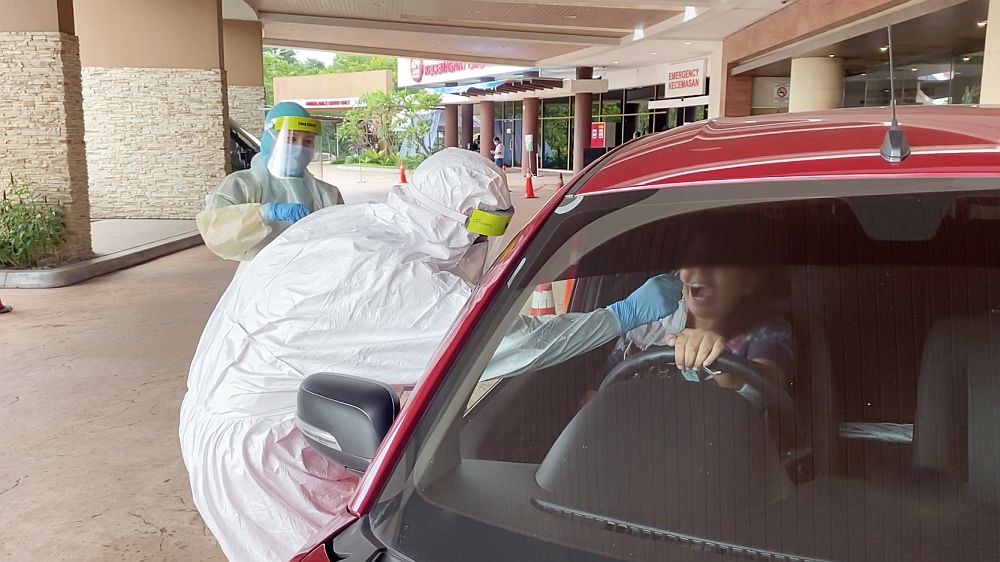As the end of December approaches, many of us will often look back and reflect on the year that has been. For us in the health care sector, 2021 was, unfortunately, a historic year for many unfortunate reasons.
As an emerging virus swept through our population, the capacity of our health care system was severely tested, and was sadly found wanting.
Much has been said about the challenges that were faced during the horrific surge of Covid-19 cases this year, from lack of oxygen, beds and manpower, to failures in public health measures, and the longstanding issue of contract doctors.
In the time since that storm has passed, it would be prudent for us to ponder the path for our health care system moving forward.
Many Malaysians have grown up used to a universal health care system fully provided for by the government. The public system takes up more than half of hospital care, with 67 per cent of admissions and 87 per cent of outpatient visits.
Health is accepted as a public good, based on the principles of equity and access. The idea that every Malaysian can have access to care by paying only RM1 is burnished in the minds of the public and woe betide any policymaker who would take that benefit away.
Running in parallel, the private hospital system is seen as providing patients with options to choose facilities and doctors, and bypassing the increasingly long waiting times in the public hospitals.
Interestingly, the primary care network is mostly served by private medical practitioners who operate 72 per cent of medical clinics and nearly 99 per cent of dental clinics.
Having established the importance of private providers in our health care ecosystem, it is somewhat disappointing to note that most policy decisions and strategies on health care still mostly revolve around the public sector.
This disconnect between the public and the private came to a head during the Covid-19 crisis.
Public hospitals were forced to bear the additional load of Covid patients alongside their already heavy loads of non-Covid patients.
The Klang Valley public hospitals, in particular, many of which serve as national tertiary referral centres, struggled to accommodate the rising surge of Covid patients while maintaining critical tertiary services such as oncology and cardiac surgery.
It was not until August 2021, when the Greater Klang Valley Special Task Force (GKVSTF) on Covid-19 was formed, that a large-scale decanting exercise was undertaken to create additional surge capacity in public hospitals by sending non-Covid patients to private hospitals.
Over the space of three weeks, more than 2,000 patients were decanted, making way for critically-ill Covid patients to seek care in six fully-Covid public hospitals.
In addition, legislation covering aspects of the health care ecosystem seems out of step with the rapid development of the sector. The Nurses Act 1950 was last revised in 1969 while health insurance, despite its unique nature of business, remains regulated under the Insurance Act 1996, together with other types of general insurance.
The Telemedicine Act 1997 remains ungazetted, and it was only through powers under the Emergency Ordinance that private health care providers were allowed to offer telehealth services to the public.
Faced with outdated legal frameworks, it would be difficult for existing and emerging health care players to innovate and invest in new ways of delivering health services to the population.
However, all is not doom and gloom. Forced to come together as a nation, the National Covid-19 Immunisation Programme (PICK) stands out as an exemplary model for public-private partnership.
Operationalised under ProtectHealth Corp, a Ministry of Health (MOH)-owned agency, over 2,000 private health providers participated in the National Covid-19 Immunisation Programme (PICK), contributing up to 48 per cent of total doses administered in Malaysia.
In the Klang Valley, 79 per cent of doses administered under Operation Surge Capacity were delivered by private health care providers, allowing public resources to be concentrated on overcoming the surge of Covid-19 cases.
A paradigm shift in our health care ecosystem can only occur through the reform of health care financing. A public health insurance scheme will provide more fiscal headroom, and will also set the standards of care and disbursement for private insurance companies to follow.
Instead of an all-subsidised versus all out-of-pocket approach, subsidisation in the form of national insurance will “follow” the patient, rather than being determined by the type of brick-and-mortar facility where the patient is seeking care.
The success of PICK shows that tapping into both public and private health care resources is not only efficient, but also sustainable. However, to ensure that the scheme delivers the expected outcomes, transparency of data, and an audit and accountability process must be implemented at the same time.
Ideally, an independent agency outside the traditional confines of MOH should be tasked to undertake this effort not only to ensure objectivity, but also to appreciate the differing strengths and shortcomings of public and private health care providers.
For example, during the Covid crisis, district health offices were required to register Covid cases, trace their contacts, and monitor positive patients quarantining at home. As cases increased, efforts were made to include private GPs in the process.
However, unlike Klinik Kesihatan or district health clinics, most GPs operated an independent, solo practice. It became an administrative burden for GPs to formally monitor these patients at home, as they were required to submit numerous returns to ensure central data collection remain up-to-date, and seeing a patient who later tested positive in their premises could lead to a shutdown for as long as three days.
As a result, private GPs were not as pivotal in the primary care of Covid patients as they could have been. This lack of engagement with GPs into a national health care system does not bode well for our efforts to combat the rising wave of chronic non-communicable diseases (NCDs) in Malaysia.
Technology is also a topic that is often discussed, and for good reason. Without a shared data platform with input from both public and private health care players, it is difficult to formulate any evidence-based policy or decision.
At the height of the Covid crisis, public and private hospitals were made to send spreadsheets at the end of each shift detailing the number and categories of Covid patients admitted into their facilities.
It can be said that if Google Sheets was to have gone down during that time, the entire national Covid response would have ground to a halt. Information gaps also hamper efforts to ensure accountability and outcomes, not to mention making for a poor customer experience.
While the government has plans to implement electronic health records in public facilities, there has been little effort to incentivise and facilitate private health care providers to digitalise and onboard them into a shared data ecosystem.
A visionary, inclusive and comprehensive national health IT masterplan should be made a priority, as we can no longer afford to rely on outdated or incomplete data for decisions, or operate in a black box while the world moves on to AI and technology-enabled health solutions.
Last but not least are the people. While handclaps and serenades for frontline workers were performed all over the world last year, the reality on the ground is grim.
Many health care workers experience burnout, and a significant number reported struggles with mental health issues. Countries like the United States, whose health workers faced wave after wave of Covid admissions and deaths in the face of anti-vaccination and Covid conspiracy theorists, have seen unprecedented levels of resignations amongst health care staff.
In the current climate, there is no globalised market like the health care labour market. Countries are rolling out the red carpet for Malaysian health care workers who are by and large well-trained and multilingual.
Unfortunately, training health care resources takes time. On average, it takes 10 years to train a specialist. And yet, as we speak, disillusioned contract doctors are planning another hartal (strike) to protest their lack of a future.
So, we are faced with longstanding and increasingly acute shortages of health care manpower, without having a stable plan to secure the pipeline of these talents for the future.
In addition, we have yet to focus on ensuring the development of non-clinical specialisations in other areas such as bioinformatics, medical logistics, and thanks to Covid, air quality experts. Small wonder that HR is the most taxed department in most health care organisations.
It feels as though we are at the tipping point when it comes to the state of our health care system. Covid has shown us new ways of working, but incremental changes may not be sufficient for us to bridge the ever-widening chasm.
The lack of a stable government is putting additional pressure too, as much-needed reforms await firmer leadership from Parliament.
This pandemic has shown us that health care is the responsibility of everyone. The virus acknowledges none of the artificial boundaries humans have created for ourselves.
Accountability starts with the individual testing, isolating, and adhering to public health measures, and extends to the whole of society, from employers ensuring employee welfare and housing to policymakers from various ministries, and even countries coming together to address the burdens to the health care system, economy, and society.
As the year draws to a close, I can only hope that we take Covid’s lessons to heart, and commit to reaching out across the invisible lines to do what needs to be done for all our sakes.

Nadiah Wan is Chief Executive Officer of Thomson Hospital Kota Damansara and Executive Director & Group Chief Executive Officer of TMC Life Sciences Berhad. She is also a director of the Institute of Corporate Directors Malaysia. Nadiah holds an AB in Biochemical Sciences from Harvard College and an MSc in Public Health (Nutrition) from the London School of Hygiene and Tropical Medicine. She is a mother of one.
Ms Nadiah’s article is part of an exclusive series of guest essays by experts in the health care sector for CodeBlue on their reviews of Malaysia’s 2021 Covid-19 response and their outlook for 2022.








